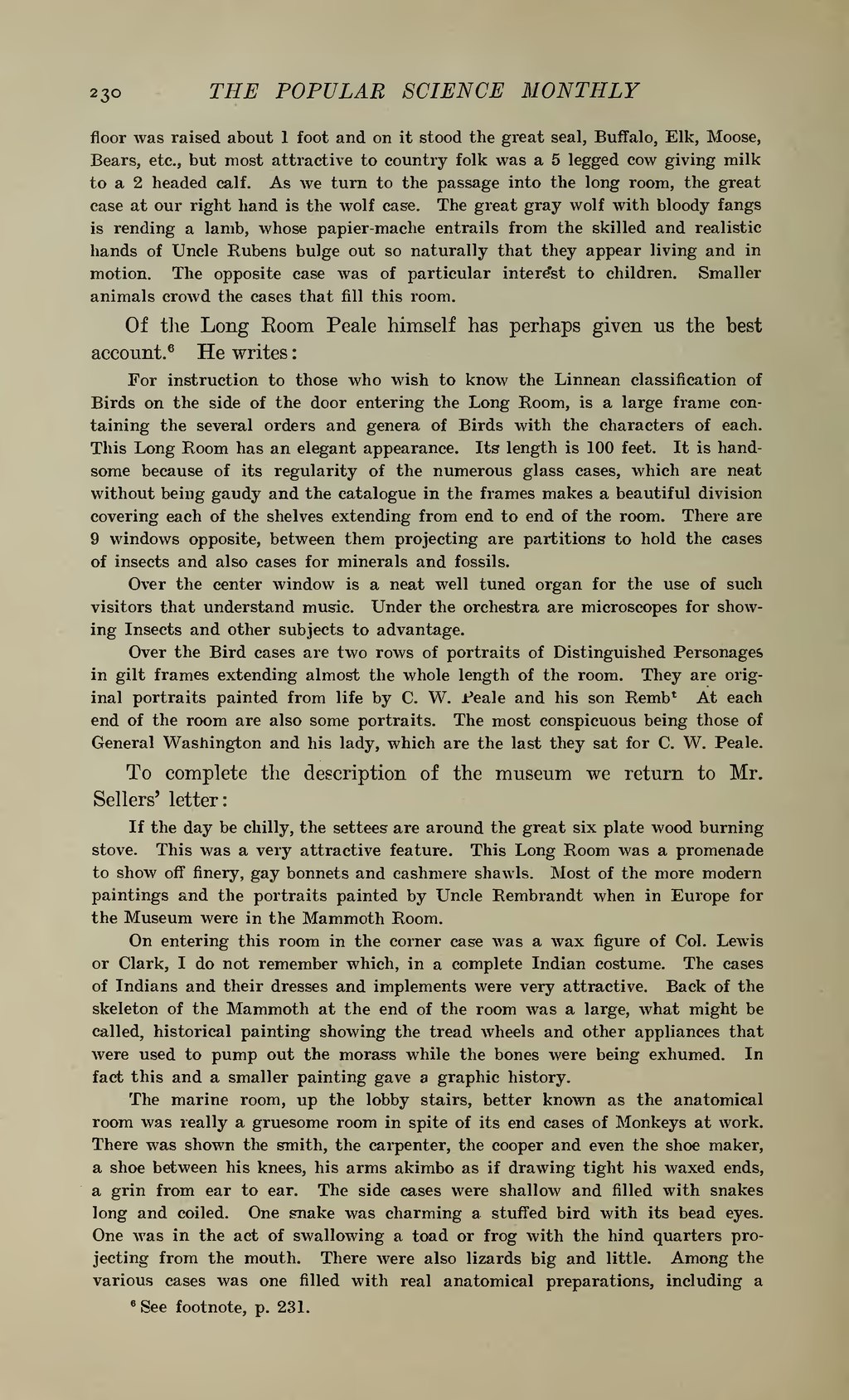Of the Long Room Peale himself has perhaps given us the best account.[1] He writes:
Over the center window is a neat well tuned organ for the use of such visitors that understand music. Under the orchestra are microscopes for showing Insects and other subjects to advantage.
Over the Bird cases are two rows of portraits of Distinguished Personages in gilt frames extending almost the whole length of the room. They are original portraits painted from life by C. W. Peale and his son Remb1 At each end of the room are also some portraits. The most conspicuous being those of General Washington and his lady, which are the last they sat for C. W. Peale.To complete the description of the museum we return to Mr. Sellers' letter:
If the day be chilly, the settees are around the great six plate wood burning stove. This was a very attractive feature. This Long Room was a promenade to show off finery, gay bonnets and cashmere shawls. Most of the more modern paintings and the portraits painted by Uncle Rembrandt when in Europe for the Museum were in the Mammoth Room.
On entering this room in the corner case was a wax figure of Col. Lewis or Clark, I do not remember which, in a complete Indian costume. The cases of Indians and their dresses and implements were very attractive. Back of the skeleton of the Mammoth at the end of the room was a large, what might be called, historical painting showing the tread wheels and other appliances that were used to pump out the morass while the bones were being exhumed. In fact this and a smaller painting gave a graphic history.
The marine room, up the lobby stairs, better known as the anatomical room was really a gruesome room in spite of its end cases of Monkeys at work. There was shown the smith, the carpenter, the cooper and even the shoe maker, a shoe between his knees, his arms akimbo as if drawing tight his waxed ends, a grin from ear to ear. The side cases were shallow and filled with snakes long and coiled. One snake was charming a stuffed bird with its bead eyes. One was in the act of swallowing a toad or frog with the hind quarters projecting from the mouth. There were also lizards big and little. Among the various cases was one filled with real anatomical preparations, including a- ↑ See footnote, p. 231.
